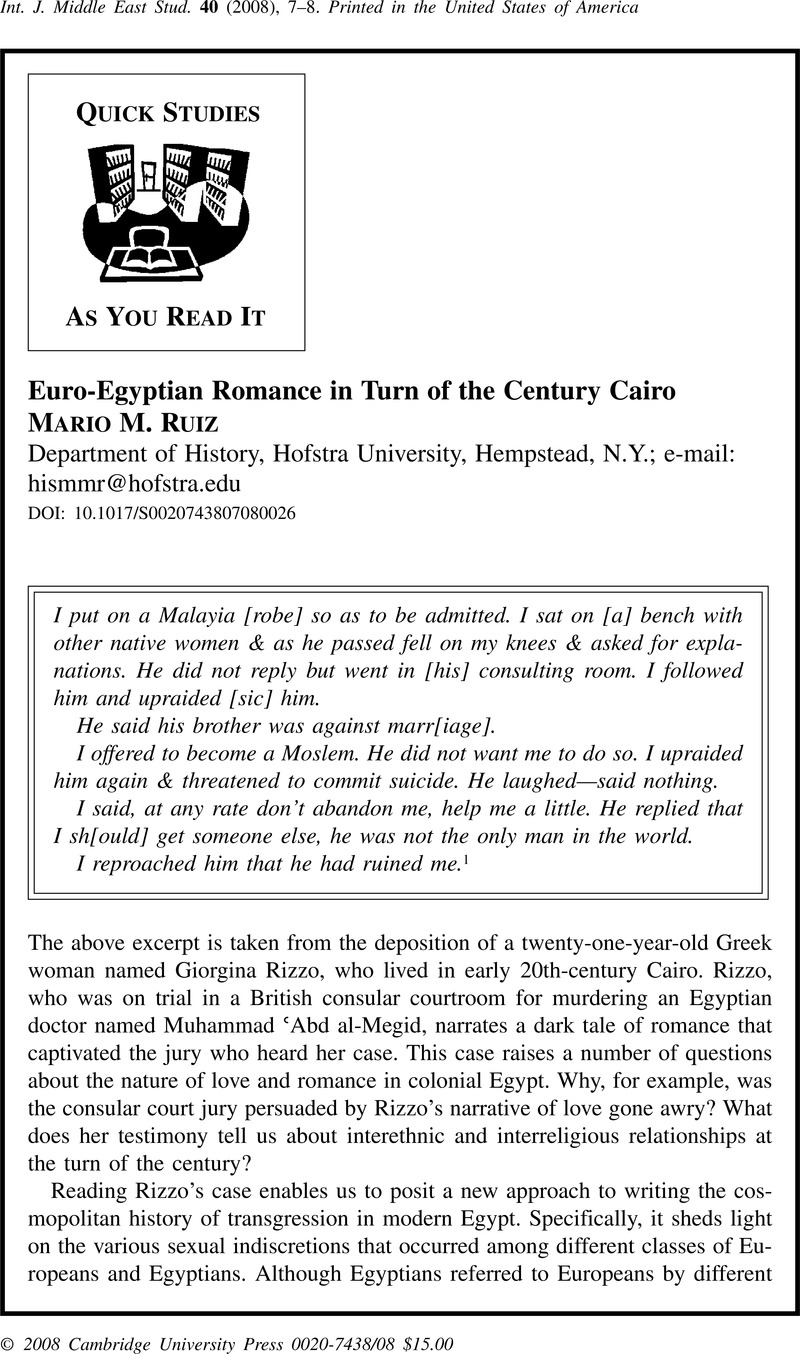No CrossRef data available.
Published online by Cambridge University Press: 01 February 2008

1 United Kingdom National Archives, Foreign Office 841/147, Cairo, case no. 78, 13 October 1914.
2 See, for example, Joel Beinin and Zachary Lockman, Workers on the Nile: Nationalism, Communism, and Islam, and the Egyptian Working Class, 1882–1954 (Princeton, N.J.: Princeton University Press, 1987); J. R. Cole, Colonialism and Revolution in the Middle East: Social and Cultural Origins of Egypt's ʿUrabi Movement (Princeton, N.J.: Princeton University Press, 1993); Robert Vitalis, When Capitalists Collide: Business Conflict and the End of Empire in Egypt (Berkeley, Calif.: University of California Press, 1995).
3 For a discussion of the legal privileges accorded to Europeans living in Egypt, see Jasper Brinton, The Mixed Courts of Egypt (New Haven, Conn.: Yale University Press, 1968); Byron Cannon, Politics of Law and the Courts in Nineteenth-Century Egypt (Salt Lake City, Utah: University of Utah Press, 1988).
4 For another case involving a Greek–Egyptian romance, see Rudolph Peters, “The Infatuated Greek: Social and Legal Boundaries in Nineteenth-Century Egypt,” Égypte/Monde Arabe 34–2e semestere (1998): 53–65.